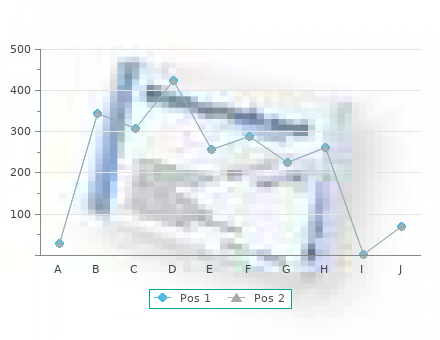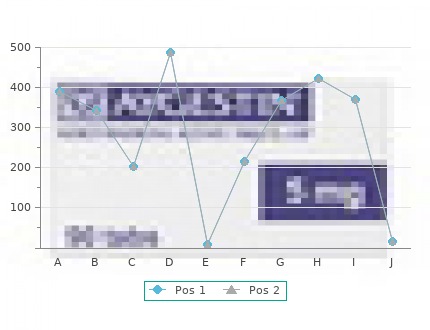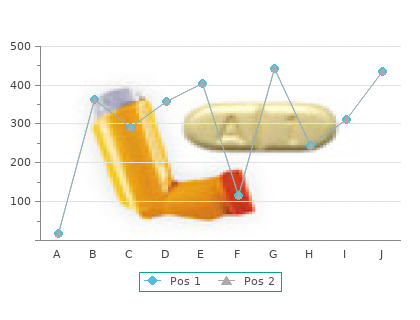V-gel
2018, New York University, Thorald's review: "V-gel 30 gm. Proven online V-gel.".
Disadvantages: Policies should specify what type of patient information can be retrieved order 30gm v-gel with mastercard herbals stores, by whom, and for what purpose (privacy). Study Guide for Fundamentals of Nursing: The Art and Science of Nursing Care, 7th Edition. Baron’s medication administration and any follow-up appointments should be discussed and written in the discharge summary. Study Guide for Fundamentals of Nursing: The Art and Science of Nursing Care, 7th Edition. Latent stage Genital stage Eric Erikson Based on Freud, expanded to include Trust vs. Havighurst Living and growing are based on learning; Infancy and early childhood Developmental tasks person must continually learn to adjust to Middle childhood changing social conditions, developmental Adolescence tasks Young adulthood Middle adulthood Later maturity Jean Piaget Learning occurs as result of internal Sensorimotor stage Cognitive development organization of an event, which forms Preoperational stage a mental schemata and serves as a base for Concrete operational stage further schemata as one grows and develops. Formal operational stage Lawrence Kohlberg Levels closely follow Piaget’s; preconventional Preconventional level Moral development level, conventional level, postconventional Stage 1: punishment and level; moral development influenced by cultural obedience orientation effects on perceptions of justice or interpersonal Stage 2: instrumental relationships relativist orientation conventional level Stage 3: “good boy– good girl” orientation Stage 4: “law and order” orientation Postconventional level Stage 5: social contract, utilitarian orientation Stage 6: universal ethical principle orientation Carol Gilligan Conception of morality from female point of Level 1—selfishness Moral development view (ethic of care); selfishness, goodness, Level 2—goodness nonviolence; female: morality of response and Level 3—nonviolence care; male: morality of justice. James Fowler Theory of spiritual identity of humans; faith is Intuitive–projective faith Faith development reason one finds life worth living; six stages Mythical–literal faith of faith. Synthetic–conventional faith Individuative–reflective faith Conjunctive faith Universalizing faith Copyright © 2011 Wolters Kluwer Health | Lippincott Williams & Wilkins. Study Guide for Fundamentals of Nursing: The Art and Science of Nursing Care, 7th Edition. Conventional level: This level is obtained when According to Havighurst, the developmental tasks person becomes concerned with identifying with of later adulthood include adjusting to decreasing significant others and shows conformity to their physical strength and health, adjusting to retirement expectations. Example: A college student gets all and reduced income, and establishing physical A’s in college so his parents will think he is a living arrangements. Postconventional level: This level is associated of dependency on healthcare providers and his with moral judgment that is rational and inter- family. The nurse could then base the nursing plan nalized into one’s standards or values. Example: of care on interventions to foster feelings of A bank teller resists the urge to steal money from personal dignity and worth. Logan states that he is willing to participate in latency stage and will be experiencing increased his care plan and do everything in his power to interest in gender differences and conflict and adjust to his situation by accepting the assistance of resolution of that conflict with parent of same others when necessary sex. Erikson: The 6-year-old is becoming achievement ethical/legal competencies are most likely to bring oriented, and the acceptance of parents and about the desired outcome? Havighurst: The 6-year-old is ready to learn the mental theories to nurse care planning developmental tasks of developing physical Technical: ability to provide technical nursing assis- skills, wholesome attitudes toward self, getting tance to Mr. Logan as needed along with peers, sexual roles, conscience, moral- Interpersonal: ability to use therapeutic communi- ity, personal independence, and so on. An illness cation to meet the emotional and spiritual needs of could stall these processes. Piaget: The 6-year-old is in the preoperational Ethical/Legal: ability to advocate for the unmet stage, including increased language skills and developmental needs of Mr. Kohlberg: Moral development is influenced by Home healthcare services, community services, cultural effects on perceptions of justice in inter- support groups personal relationships. Moral development begins in early childhood and could be affected by a traumatic illness. A health problem of any family member can affect the Chart/Exhibit Questions remainder of the unit. Study Guide for Fundamentals of Nursing: The Art and Science of Nursing Care, 7th Edition. Age group—Physiologic characteristics and behaviors I—Is in oral stage (Freud); strives for immediate P—Motor abilities include skipping, throwing and gratification of needs; strong sucking need. A—In Freud’s genital stage, libido reemerges in I—Brain grows to about half the adult size mature form. N—Reflexes include sucking, swallowing, blinking, T—Is in anal stage (Freud); focus on pleasure of sneezing, and yawning sphincter control N—Temperature control responds quickly to A—Self-concept is being stabilized, with peer group environmental temperatures as greatest influence.


Thus purchase v-gel 30 gm visa herbs mopar, its use is very controversial, and the sources are split four to three on whether it should ever be recommended. Alcohol, other sedatives, muscle relaxants, dopamine, haloperidol, acetaminophen, and benzodiazepines. Taking kava with alcohol, other sedatives, or muscle relaxants can result in additive effects up to and including coma. Alcohol or acetaminophen (Tylenol), which may injure the liver, should never be used with kava. Kava may interfere with the effects of dopamine and drugs that are similar to dopamine and may worsen the neurological side effects of drugs that block dopamine, such as haloperidol (Haldol). Kava may also cause anesthesia to last longer and use should be carefully coordinated with the prescribing physician or anesthesiologist. Lake and Spiegel, Mischoulon and Rosenbaum, the Natural Standard, and Weil counsel that kava should be avoided in individuals with a history of liver disease or alcohol use, and in those who are taking concurrent medications with potential liver toxicity. Mischoulon and Rosenbaum conclude: “Kava should be prescribed and used with great caution. More research pinpointing risk factors could modify these recommendations, since liver toxicity appears to be extremely rare, and bad experience with other anxiolytics could prompt a trial of kava if the risk factors appear to be low, with proper medical supervision. Pregnancy, lactation or child use would appear not to impose a separate challenge. The risk of liver damage is substantial and may be irreversible, even though it appears to be rare. Kava, Piper methysticum, is native to the islands of the South Pacific and is a member of the pepper family. The root and rhizome (underground stem) of kava are used to prepare beverages, extracts, capsules, tablets, and topical solutions. Kava has been used to help people fall asleep and fight fatigue, as well as to treat asthma and urinary tract infections. Six sources confirm the beneficial uses of kava as a mild intoxicant and analgesic, but Brown et al. Kava was shown in “more than a dozen” passive placebo studies to be effective with good tolerability for treatment of “generalized anxiety, tension, agitation, agoraphobia, specific [other] phobias, generalized anxiety disorder, adjustment 3 disorder, and insomnia. Anxiety, insomnia and panic disorders would all be studied as promising practices if kava were not implicated in a few catastrophic cases of liver toxicity. Most of the studies are limited by small samples, short duration of treatment, and a lack of rigorous diagnostic criteria. Moreover, no published studies have yet tested kava’s efficacy for panic disorders. Taking kava with alcohol, other sedatives, or muscle relaxants can result in additive effects up to and including coma. Alcohol or acetaminophen (Tylenol), which may injure the liver, are strongly contraindicated for use with kava. Kava may interfere with the effects of dopamine and drugs that are similar to dopamine and may worsen the neurological side effects of drugs that block dopamine such as haloperidol (Haldol). Kava may also cause anesthesia to last longer and use should be carefully coordinated with the prescribing physician or anesthesiologist. Laboratory tests suggest a danger of bleeding, but this has not yet been found in human subjects. Still, Natural Standard cautions against using anticoagulants or antiplatelets with kava. Chronic use of kava up to 100 times the therapeutic dose results in an ichthyosiform eruption (yellowed skin) known as kava dermopathy, which is often accompanied by eye irritation. Less common side effects include restlessness, drowsiness, lack of energy, and tremor. In four cases, kava was associated with dyskinesias or worsening Parkinsonian symptoms. According to Mischoulon and Rosenbaum, the more serious toxic reactions have been associated with high doses (over 300 g. If any abnormalities are found, then kava should be discontinued immediately and liver enzymes should be retested in about two weeks, by which time they should return to normal. Less common side effects include restlessness, drowsiness, lack of energy, and tremor. In four cases, kava was associated with dyskinesias or worsening Parkinsonian symptoms.

It can also be attributed to the increasingly crowded living conditions in urban areas cheap 30 gm v-gel overnight delivery herbs for anxiety. Tuberculosis is transmitted from one person to another by droplets dispersed in the air through coughing and sneezing. The tubercle bacilli can spread from the lungs to other organs of the body via the blood and lymphatic system. If the body’s immune system is strong or intact, the phagocytes stop the multiplication of the tubercle bacilli. When the immune system is compromised, the tubercle bacilli spread in the lungs and to other organs. Dissemination of tuberculosis bacilli can be found in the liver, kidneys, spleen, and other organs. Patients who develop chronic bronchitis have excess mucous production that irritates the bronchial causing the patient to have a persistent productive cough. Patients exhibit a gurgling lung sound (rhonchi) both on inspiration and expi- ration. The excess mucus blocks the airway causing a build up of carbon diox- ide in the blood (hypercapnia) and a decrease in oxygen (hypoxemia) which leads to respiratory acidosis. This condition alters the lining of the airways and damages the lung’s ability to filter air. The alveoli become enlarged and damaged, trapping air in the over expanded alveoli preventing an adequate exchange of oxygen and carbon dioxide. Emphysema is caused by smoking cigarettes, by inhaling contaminants from the environment, or by the lack of the alpha1-antitrypsin protein. The lung con- tains bacteria that release proteolytic enzymes that destroy alveoli. The alpha1- antitrypsin protein inhibits proteolytic enzymes and protects the alveoli. Excess mucus as well as the residue from cigarette smoking and airborne pol- lutants find their way down the airways and plug the terminal bronchioles. The network of alveoli then loses their fiber and become inelastic and unable to spring back to size after expanding during inspiration. This causes bronchospasms that result in the patient wheezing and having difficulty breathing. More than 500,000 patients are hospitalized and 5000 die from asthma each year making acute asthma the third leading cause of preventable hospitalizations in the United States. There are a variety of allergens (something that causes an allergic reaction) that can trigger an asthma attack. These include humidity, air pressure changes, temperature changes, smoke, fumes (exhaust, perfume), stress, emotional upset, and allergies to animal dander, dust mites, and drugs such as aspirin, indometh- acin, and ibuprofen. Allergens attach to mast cells and basophils in connective tissues causing an antigen-antibody reaction to occur. These chemicals constrict the bronchi, increase mucous secretions, stimulate the inflammatory response, and cause pulmonary congestion. An increase in the serum level of eosinophils indicates that the inflammatory response has occurred. Long-term management includes controlling extrinsic factors that caused the attack, educating the patient and the patient’s family, school officials, and employers about how to reduce exposure to those factors, and using various combinations of medications depending on the severity of the disease. Bronchodilator Bronchodilators relax smooth muscles around the bronchioles restoring airflow to the lungs. Some sympathomimetics are selective to particular adrenergic receptors, which are referred to as alpha1, beta2 and beta2-adrenergic. Other sympath- omimetics are non-selective sympathomimetic that affect all types of adrenergic receptor sites. Selective beta2-adrenergic agonists have fewer side effects then epinephrine and are given by aerosol or as a tablet. Ipratropium bromide (Atrovent) is an anticholinergic drug that inhibits vagal- mediated response by reversing the action of acetylcholine, producing smooth muscle relaxation. Ipratropium bromide (Atrovent) is used five minutes before glu- cocorticoid (steroid) or cromolyn are inhaled so the bronchioles dilate enabling the steroids to be deposited in the bronchioles. Sometimes ipratropium bromide is combined with albuterol sulfate (Combivent) to treat chronic bronchitis for more effective and longer duration than if each is used alone. Methylxanthine (xanthine) derivatives are a second group of bronchodilators used to treat asthma.

Child Psychology: Development and Be- operations purchase v-gel 30 gm on-line herbals vaginal dryness, stage (ages 12 and higher) is characterized by havior Analysis. A Child’s World: Infancy through Adoles- stages is the one proposed by neo-Freudian Erik Erikson cence. While Erikson’s eight- stage theory encompasses the entire human life span, much of it is centered on childhood and adolescence. Each devel- opmental stage in Erikson’s scheme is concerned with a central conflict: trust versus mistrust in infancy; autonomy Childhood versus doubt and shame in early childhood; initiative ver- The period between birth and adulthood, during sus guilt in the preschool period; and industry versus infe- which a person develops physically, intellectually, riority during the early school years. In addition to genetic Childhood has been defined differently across the abnormalities like Down syndrome,environmental ages. These might lieved children were born with certain dispositions that be maternal viruses such as rubella (German measles) or could be changed by their environment. Expo- mans expressed great affection for their children in let- sure to nicotine is linked to premature birth, low birth ters and on tombstones. During the Middle Ages, little weight, and cleft (malformed) palate and lips, while ex- distinction was made between adults and children, who posure to alcohol is linked to intellectual and behavioral worked from a very young age. An inadequate maternal diet also puts the beginning of the nuclear family in Europe, with an in- fetus at risk, especially its brain and nervous system. The vast majority of babies, however, are born ical school of philosophy, believed the child enters the healthy and normal. Jean-Jacques Rousseau (1712-1778) took the opposite tack, recommending that education should Infancy follow nature since infants automatically prefer good- Newborns enter the world with many skills. According to Sigmund Freud’s (1856-1939) psy- tion to a range of adaptive reflexes such as grasping, choanalytic theory, children must pass through five psy- sucking, and rooting (turning the head when the cheek is chosexual stages to achieve healthy adulthood. In con- touched), they are able to recognize their mothers’ face, trast behaviorist John Watson (1878-1935) asserted voice, and smell. Even more impressive, less than one that, given a controlled environment, he could train a hour after birth, babies can imitate gestures such as child to be anything from doctor to thief. By age two for girls and two-and-a-half for boys, babies reach half their Prenatal development adult height. Physical development is largely pro- The future adult begins not at birth but at concep- grammed by a genetically determined timetable called tion, with the creation of a unique set of genes, half from maturation, which proceeds in predictable stages. This genetic blueprint is healthy, well-nourished babies, progress is influenced called the genotype; its outward manifestation is the phe- only slightly by environment, although they need oppor- notype. More often, the The rate of physical growth slows after the second phenotype represents the interaction of the genotype and year, not accelerating again until puberty. It is even possible for the genotype to rate of growth are genetically determined. In industrial- be altered by the environment, as happens when men ex- ized societies, puberty begins at 10 for girls and 12 for posed to certain toxins suffer an increased risk of father- boys, ages that have declined significantly over the past ing children with genetic abnormalities. Fewer than half of fertilized eggs, called zygotes, survive the first two weeks during which the zygote Intellectual development moves from the fallopian tube where it was fertilized to the uterus where it is implanted. During the next six The Swiss researcher Jean Piaget (1896-1980) pio- weeks, the zygote differentiates into an embryo with in- neered the field of cognitive, or intellectual, development. In the final seven months of gestation, the he divided children’s thinking into four qualitatively dis- maturing skeletal, muscular, and nervous systems of tinct stages, moving from a direct sensory understanding what is now called the fetus make movement possible. There is strong evi- found that, contrary to Piaget’s theory, even babies seem dence for a biological component to personality dimen- to understand basic principles like object permanence, sions like sociability, irritability, neuroticism, and con- the concept that objects continue to exist when hidden. A baby’s innate sociability, for example, can be been confirmed, far fewer people attain Piaget’s final squelched by a depressed mother, or a child’s innate irri- stage of logical reasoning than he predicted. In general, how- ever, personality characteristics remain stable from in- Other theories of learning attribute cognitive devel- fancy to adolescence. Conditioning works by encouraging behavior Social development through reinforcement or discouraging it through pun- ishment. Social learning theory adds another mecha- Children grow up in a web of social relationships. The first and most important is the bond between infant and mother called attachment. Attachment is crucial be- Intelligence cause securely attached babies tend to become sociable, confident, independent, and emotionally mature chil- The measurement of intelligence, psychometrics, dren.
9 of 10 - Review by K. Grobock
Votes: 179 votes
Total customer reviews: 179


